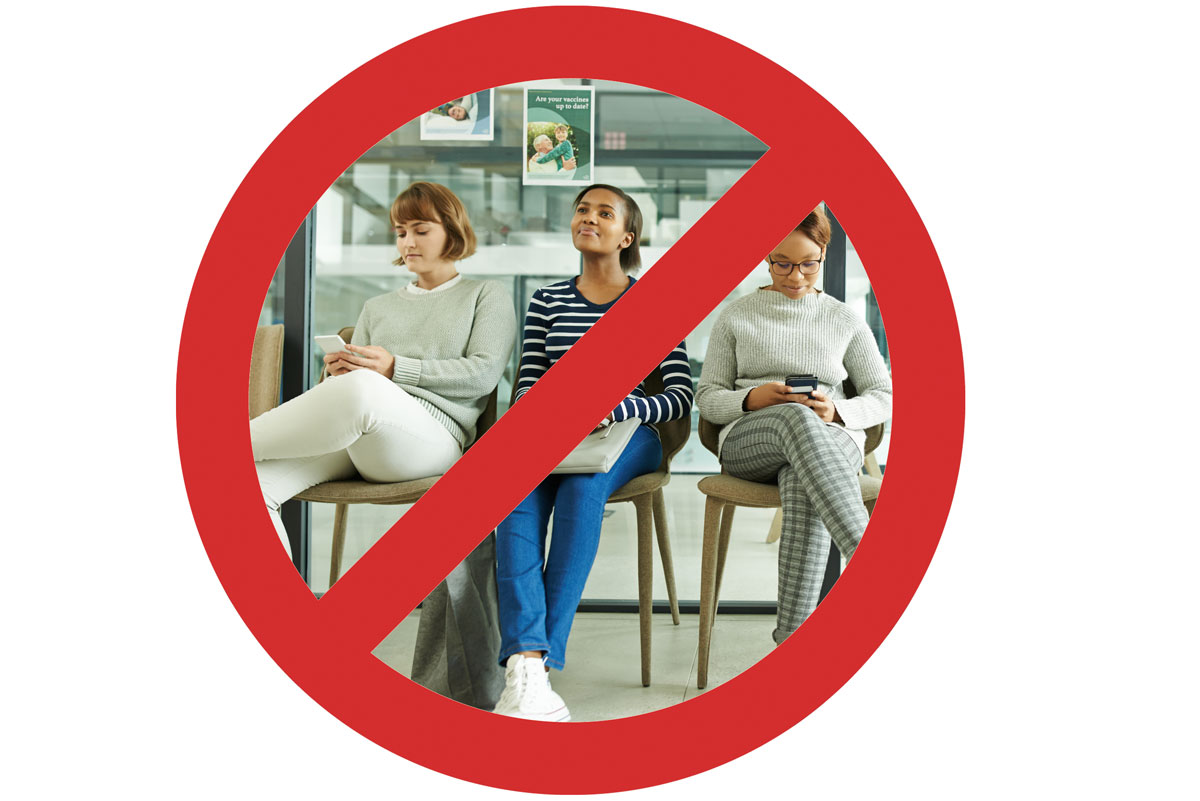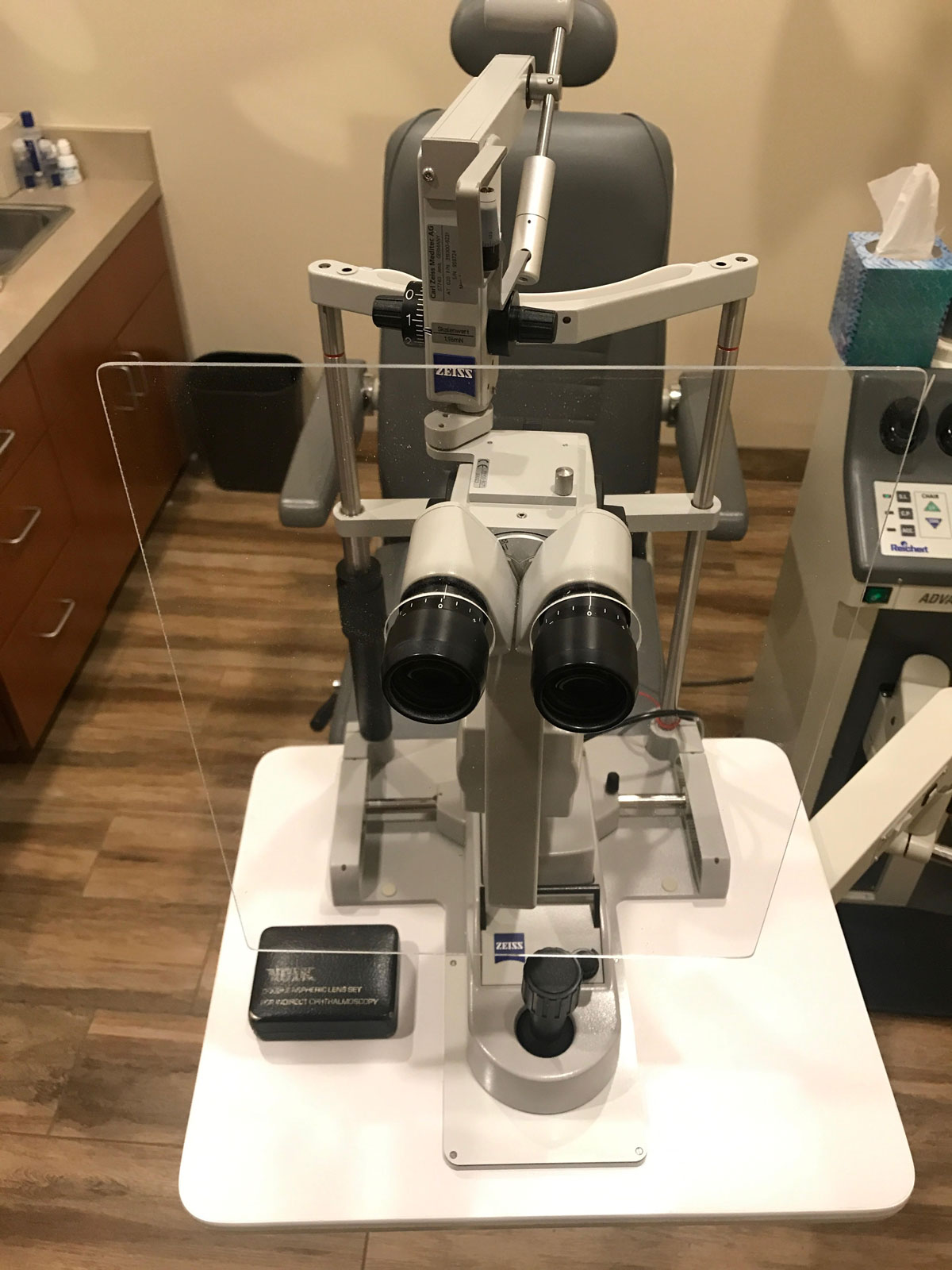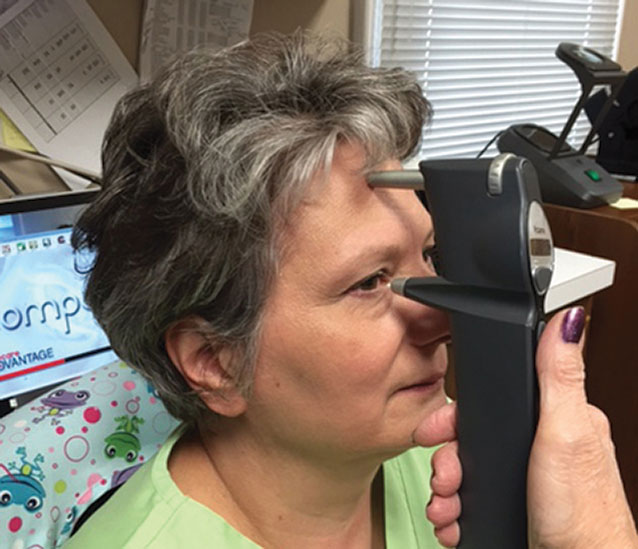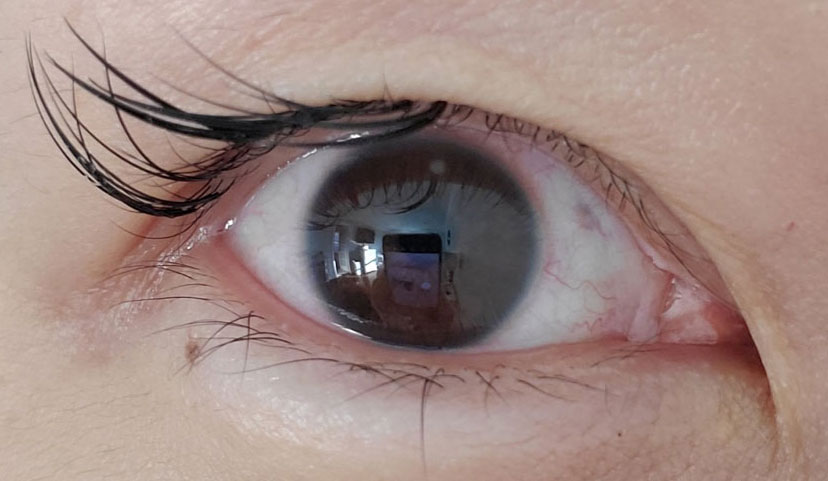COVID-19’s rapid sweep across the country has caused an unprecedented disruption to the profession and forced optometrists to make quick clinical and practice management decisions. Many ODs shuttered their practices temporarily due to COVID-19, while others improvised with urgent appointments only and telehealth. Now that the CDC’s nationwide recommendation to postpone routine eye care is no longer in effect, ODs are faced with a new challenge: What should they have in place before reopening?
Almost all eye care practitioners (93%) who responded to the 7th wave of Jobson’s Coronavirus ECP Survey expect to reopen their practices once restrictions are lifted, but they also anticipate they’ll need to implement changes to continue social distancing and limit the spread of infection.
Here’s an array of things you should consider:
(Ed. note: The advice provided here is from anecdotal sources and may not conform to state or federal guidance. Use your own discretion whenever contemplating changes to clinical or business practices.)
1. Have a Plan
Somewhat encouragingly, the latest survey of ECPs found more than half (57.9%) are currently working on a written reopening plan, nearly double the amount who said so just two weeks prior. But everyone should be planning, according to practice management consultant Gary Gerber, OD, of the Power Practice. It’s critical to have a well-thought out framework that touches on all aspects of the practice and patient care prior to opening your doors again for “routine patient care,” he says.
AOA Provides Reopening ChecklistAs mandatory restrictions begin to lift and optometrists prepare to open their doors for routine care, the AOA recently offered guidance on what practices should have in place to reopen.1 “The American Optometric Association is committed to helping our members be prepared for the 'new normal' when it's safe to open practices,” says AOA President Barbara L. Horn, OD. “Doctors of optometry will be doing things differently in their practices, and the AOA continues to develop helpful guidance supported by the latest information from all federal agencies.” The AOA recommends ODs set their reopen date based on federal, state and local guidance—and have a reopen plan that leaves plenty of time to sanitize the office and all equipment. Here are a few steps from the AOA’s “Optometry Practice Reactivation Preparedness Guide” to augment what your colleagues have already suggested:
To access the AOA’s complete guide, click here.
|
“Many doctors are thinking, ‘I’m going to reopen, and it won’t be as busy, so I’ll just slowly get back into it,’” Dr. Gerber says. “But it’s not going to be ‘pre-COVID’ slower, it’s going to be slower and very different. You have to walk through simulations with your staff prior to reopening.” This is not a time to improvise as you go.
Dr. Gerber suggests all doctors do a simulation of the patient’s in-office journey prior to reopening. “It’s important to do a walk through to determine when and where you will need PPE or social distancing for different situations. If an optician takes out their tools to bend a nose pad, for example, what are they going to do with that tool? Does the tool get disinfected before they use it again?” It’s critical to have everything mapped out before you reopen, he says.
2. Ignore Peer Pressure to Reopen
“The biggest gray area I’m hearing from other doctors is when to reopen, when is it safe, when is it advised, and there’s no good answer for that,” says Samantha Hornberger, OD, of Lawrenceburg, IN. “This was the same situation for many of us when we decided to close.”
Because reopening dates are mostly dependent on individual state’s stay-at-home orders, rescheduling patients can be a moving target. Most governmental guidance on reopening will be regional, says Brian Chou, OD, of San Diego. But such guidance may conflict with other considerations, including what public health data suggests, he adds.
There could also be “herd mentality” and pressure to open if other offices do so, Dr. Chou says. That could lead to hastily prepared plans that may end up being counterproductive. Bottom line: getting it right matters more than being fast.
At the time of this writing, Dr. Hornberger had her patients rescheduled starting the first week of May—a date subject to change in these shifting times.
Aaron Neufeld, OD, a private practitioner from Los Altos, CA, and co-founder of ODs on Finance, hopes to reopen his practice in full when the shelter-in-place rule is lifted in his area.
“Our mid-May schedule has already been filling. That being said, there will definitely be changes implemented for the health and safety of our patients and staff, as well as for public perception.”
3. Rely on Experts
Even if social distancing mandates a six-foot radius between each person, no one should feel alone. Everyone is in the same boat, and support is available from your optometric colleagues and state and national optometric associations. The American Optometric Association (AOA) released much-anticipated guidance on how to reopen during the pandemic (see, “AOA Provides Reopening Checklist”), much of which is reflected here.
 |
| Gone are the days of packed waiting rooms. Instead, clinicians should space out seating and scheduling to minimize patient interactions. Click image to enlarge. |
4. Make Distancing Mandatory
A recent article published in the Journal of Glaucoma suggests efforts to shorten wait times and lines will be paramount.1 ODs should rearrange their waiting rooms to reduce capacity and encourage patients to limit the number of people accompanying them.1 The article also suggests patients in suburban locations may be asked to wait in their cars until they receive a text message from the office.1
“We will likely make changes to avoid having multiple patients in the same area at the same time,” explains Jennifer Stewart, OD, of Norwalk, CT. “This may include decreasing the number of patients on the schedule, staggering how they are scheduled, asking patients to wait in their cars until we are ready and changing patient flow in our office to minimize crowding.”
Letting patients browse about the office will have to stop for a while. Some practices will require patients book an appointment for their dispensaries, in 15-minute increments, with access limited to one individual at a time.
5. Find Hands-free Options
Doctors may want to put into place methods to reduce the amount of surfaces a patient touches, such as leaving the practice front door open (or even installing a motion-activated door), launching cashless payment systems and encouraging patients to fill out registration forms online, Dr. Chou says.
6. When in Doubt, Reschedule
Moving forward, patients won’t want to be near anyone who’s visibly unwell, COVID-related or not. Dr. Stewart will ask patients who are ill or who have been in contact with someone who is sick to reschedule in two to three weeks.
7. Take Temperatures of Everyone
This goes for both staff and patients. It’s not the most reliable screening tool, as asymptomatic individuals can still spread the virus, but it might catch some. Some medical authorities advise that anyone registering 100.4° or higher should be sent home. Moreover, it has a psychological benefit. Patients will be more at ease knowing that everyone who’s currently on the premises or who passed through that day has been screened.
8. Conduct Histories by Phone
Have a staff member call each patient a day or two before their exam to obtain all insurance and registration information, plus a full history. With a lower caseload at the outset, staff may have time to devote to this task. Patients will appreciate it both as a safety measure and a convenience (no one likes filling out forms at the doctor’s office).
9. Walk Before You Run
Susan Resnick, OD, who has large contact lens specialty practices in Manhattan and Long Island, has decided to scale down hours and capacity. One doctor will be scheduled at each location from 10am until 3pm during the first two-to-four weeks. “We don’t want our staff travelling in rush hour since they rely on public transportation, and their safety is our first concern,” Dr. Resnick says.
Patients at her practice will be scheduled one per half hour and will alternate between exam rooms.
Dr. Hornberger believes many doctors will initially schedule at 50% of their previous capacity, which poses a different set of challenges regarding staffing and revenue. Prior to COVID-19, Dr. Hornberger scheduled a half hour for a complete eye exam, but she is now considering allotting an hour for each appointment to allow enough time to clean and disinfect. In addition, her current scheduling protocol is to ask patients if they are in immediate need of contact lenses or glasses, if they have issues such as diabetes or glaucoma or any other immediate reasons why they need to be seen quickly. “If not, we’re probably looking at August to schedule those patients.”
 |
| If you have the right tools, you can make your own slit lamp breath shield. Find out how here. Photo: Jacqueline Lucas, OD. Click image to enlarge. |
10. Install Breath Shields
At the slit lamp, a plexiglass barrier will be a virtual necessity from now on. Either purchase one or make your own. Consider adding a similar barrier at the front desk to separate office staff from patients.
11. Adjust Your Exam Methods
Prior to closing for routine care in March, Dr. Resnick had shifted to more “problem-centric” exams to limit touching the patient when possible. For some patients, and when appropriate, Dr. Resnick skipped certain pretests that weren’t critical. Going forward, she says her practice may forego routine visual fields except for glaucoma patients in an effort to be selective in her practice’s COVID-19 clinical strategy.
Reusable bottles such as dilating drops and topical anesthetics should be stored in a cabinet, instead of on the counter, to prevent exposure to anything aspirated by you or the patient. You may also want to wear safety goggles during any up-close contact with the patient.
12. Rethink Tonometry
Clinicians should consider replacing their reusable Goldmann tonometers with other options such as disposable tonometer prisms or single-use protective sleeves.1 Because pneumotonometers and air-puff tonometry can presumably aerosolize the tear film and any viral particles, clinicians should steer clear of these devices whenever possible.1
Dr. Hornberger currently uses an iCare rebound tonometer that allows for a sterile probe for each patient. “You don’t have the puff factor, and you don’t have to instill eye drops where you have to get close to the patient,” she says.
 |
| Tonometers that provide sterile probes for each patient, such as the iCare, may be a better option for checking IOP. Photo: Nathan Stevens, OD. Click image to enlarge. |
13. Disinfect—Everywhere, Every Time
Because of COVID-19’s easy transmission, cleaning and safety precautions will be critical. In Dr. Resnick’s practice, every exam room will be completely disinfected before the next patient—a good practice for everyone. In addition, individuals with suspected ocular infections will be put in a special containment area.
“We already have a strict sanitation and sterilization protocol in place and will continue this,” adds Dr. Stewart. “We ask patients to wash hands when they first enter the office and when moving to different rooms. We’ll continue to wipe down any patient area, including counters and doorknobs, frequently. In the optical, we’ll disinfect frames after patients touch them and minimize browsing.”
As part of Dr. Neufeld’s reopening plan, his office will implement sterilization processes for exam rooms, reception areas and optical/frames. The latter will include a bin where “used” frames will be placed and then cleaned before being put back on the frame board.
14. Boost Patient Confidence
Patients are expecting you, the healthcare professional, to set an example. “Opening up too early will cast a shadow of social irresponsibility,” Dr. Chou explains. “I feel it’s more important to communicate with the patient base since uncertainty may lead them astray to subpar online prescription renewal.” A patient communication system, such as Eyecare Prime, DemandForce or SolutionReach, will come in handy right about now, he says. (Disclosure: DemandForce is owned by Internet Brands, parent company of the publisher of Review of Optometry.)
In addition, COVID-19 likely has patients hypersensitive about disinfection, and any sanitizing activities they see—whether effective or not—will be important, Dr. Chou says. He likens this to restaurants that give straws with a paper wrapper at the top. “It’s a visual reinforcement there has been an attempt at sanitation, but the truth is, the wrapper probably does little in actually reducing contamination.”
If a patient sees you or staff disinfecting—cleaning the slit lamp with alcohol pads or wiping down surfaces in the exam room, for example—it will help reassure the patient far more than if the tech does this behind closed doors, he adds.
15. Update Your Wardrobe
COVID-19 can live on surfaces for hours, so ODs can reduce the chances of contamination for staff and patients by requiring a more sanitary dress code. Dr. Resnick’s doctors and staff will now wear scrubs, which will be put in plastic bags after wear and replaced with new scrubs delivered daily. Everyone in her offices will also wear gloves and masks, and she and the other ODs will wear N-95 masks, as they will have longer and closer interactions with the patients.
Most doctors will likely need more PPE than they think, and prior to reopening, practices need to pinpoint reliable, trusted suppliers and alternate suppliers, Dr. Gerber says. Over a three-month period, he estimates practices may need between 1,200 and 8,000 masks, depending on patient volume and number of staff. Doctors will also need to determine how often they will need to change masks and ensure they have masks on hand when patients show up to an appointment without one.
 |
| Doctors can keep using telehealth for some conditions easily identified with an external exam and a good history. This patient was diagnosed, via telehealth, with a corneal infiltrate due to overnight contact lens wear.. Photo: Suzanne W. Sherman, OD. Click image to enlarge. |
16. Keep Up With Telemedicine
Some doctors turned to telehealth out of necessity and look forward to abandoning it once they reopen. But it’s probably here to stay. Take care to master telehealth so you can make it a sustainable part of your practice. This allows you to see more patients than would otherwise be possible, extending the care you provide and adding more to practice revenue.
Does a conjunctivitis patient really need to be in the same physical space as you to make the diagnosis? Most laptop and phone cameras can give you a decent enough view. Moreover, “I can get 90% of the way to the diagnosis from the history alone,” noted Elise Brisco, OD, of Los Angeles in a recent webinar on optometric practice in the COVID-19 era.
17. Shuffle Staffing
Dr. Gerber suggests the staff you hire for reopening may not be the staff you laid off, since they may have found a different job or decided not to return if they are worried about safety issues. “Your staff might be waiting to go back to work, but not necessarily for you.”
With an initially decreased schedule, revenue flow will be a big consideration in how many staff members to bring back, Dr. Hornberger says. “A lot of doctors like me are in the same boat where we weren’t able to get any Paycheck Protection Program funds in the first round. So a big question is, can we even afford to bring staff back if we’re not seeing a full patient load?”
Adding to this, many ODs have furloughed staff currently collecting unemployment, which is enhanced by $600 a week in Federal Pandemic Unemployment Compensation until July 31, 2020.
“This means a decent number of staff are getting paid more than before and not having to work,” Dr. Chou says. “So there is an economic disincentive for these staff to return, even though one of the conditions of them accepting unemployment insurance is willingness to accept work.” Technically if they don’t accept work, they could lose all of their unemployment compensation, he adds.
18. Drop Cheapskate Plans
With the downtime, some ODs are revisiting their business decisions when it’s time to reopen, including vision plans. Dr. Hornberger’s practice currently accepts two large vision plans, but since she will be operating on reduced availability and revenue, plans with lower reimbursement rates may be dropped, she says. “If I have reduced availability, the people who really need to be seen are in my chair, and from an economic standpoint, I can’t afford to see a routine, no glasses, no contact lens vision plan reimbursement individual if I’m only seeing one patient an hour.”
Still, it might not be advisable to drop vision plans unless a practice’s schedule is completely full, Dr. Chou says. “If you are running at full capacity, that’s when it makes business sense to pare off the vision plan that is displacing your ability to see higher-value patients.”
19. Pass Along Some Costs
Many practices are changing fees when they reopen. For the first time at Dr. Resnick’s practice, she’ll be charging a nominal no-show cancellation fee. It’s justified, she says, because “we’re going to be doing concierge, personalized care where patients get a half hour to an hour all to themselves.”
And with the increased cost to practices for PPE and sanitation, a modest bump in fees will likely be necessary, Dr. Gerber adds.
20. Don’t Stress
“Obviously easier said than done; however, stressing out does nothing but add another negative item to deal with on your already overwhelmingly full plate,” Dr. Neufeld says. “This pandemic will be over, and life will resume. Look at ways in which you can run your practice in the leanest way possible right now. Slowly we will all be able to ramp up to full speed.”
As practices reopen across the country, Dr. Hornberger offers this piece of advice: be flexible. “The reopening plan doesn’t have to be perfect at the beginning. We just have to get back to taking care of our patients, and whatever that ends up looking like will be okay.”
| 1. Liebmann JM. Ophthalmology and glaucoma practice in the COVID-19 era. J Glaucoma. April 14, 2020. [Epub ahead of print]. |

